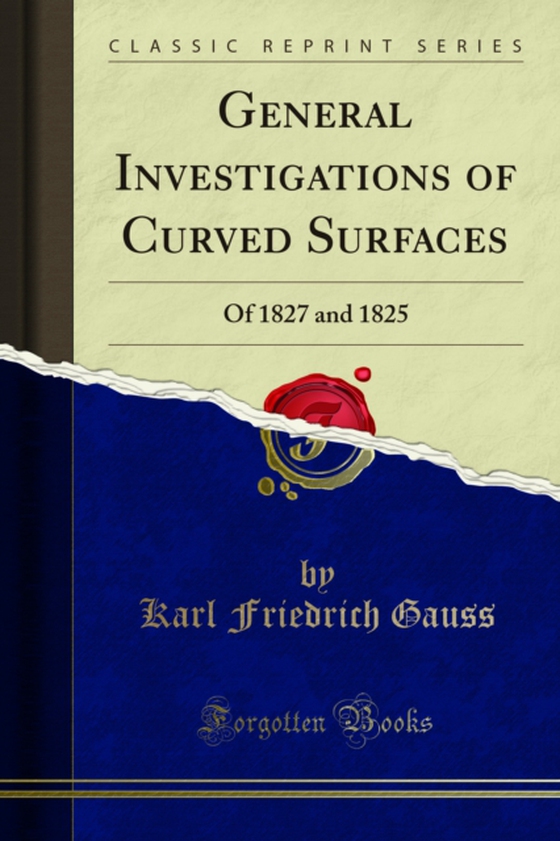
General Investigations of Curved Surfaces e-bog
68,60 DKK
(inkl. moms 85,75 DKK)
Whilst the greatest effort has been made to ensure the quality of this text, due to the historical nature of this content, in some rare cases there may be minor issues with legibility. Recently the eighth volume of Gauss's Works has appeared. This contains on pages 408 - 442 the paper which Gauss wrote out, but did not publish, in 1825. This paper may be called the New General Investigations of...
E-bog
68,60 DKK
Forlag
Forgotten Books
Udgivet
27 november 2019
Genrer
PBKA
Sprog
English
Format
pdf
Beskyttelse
LCP
ISBN
9780243657148
Whilst the greatest effort has been made to ensure the quality of this text, due to the historical nature of this content, in some rare cases there may be minor issues with legibility. Recently the eighth volume of Gauss's Works has appeared. This contains on pages 408 - 442 the paper which Gauss wrote out, but did not publish, in 1825. This paper may be called the New General Investigations of Curved Surfaces, or the Paper of 1825, to distinguish it from the Paper of 1827. The Paper of 1825 shows the manner in which many of the ideas were evolved, and while incomplete and in some cases inconsistent, nevertheless, when taken in connection with the Paper of 1827, shows the development of these ideas In the mind of Gauss. In both papers are found the method of the spherical representation, and, as types, the three important theorems: The measure of curvature is equal to the product of the reciprocals of the principal radii of curvature of the surface, The measure of curvature remains unchanged by a mere bending of the surface, The excess of the sum of the angles of -a geodesic triangle is measured by the area of the corresponding triangle on the auxiliary sphere. But in the Paper of 1825 the first six sections, more than one-fifth of the whole paper, take up the consideration of theorems on curvature in a plane, as an introduction, before the ideas are used in space; whereas the Paper of 1827 takes up these ideas for space only. Moreover, while Gauss introduces the geodesic polar coordinates in the Paper of 1825, in the Paper of 1827 he uses the general coordinates, p, 9, thus introducing a new method, as well as employing the principles used by Monge and others.
 Dansk
Dansk

